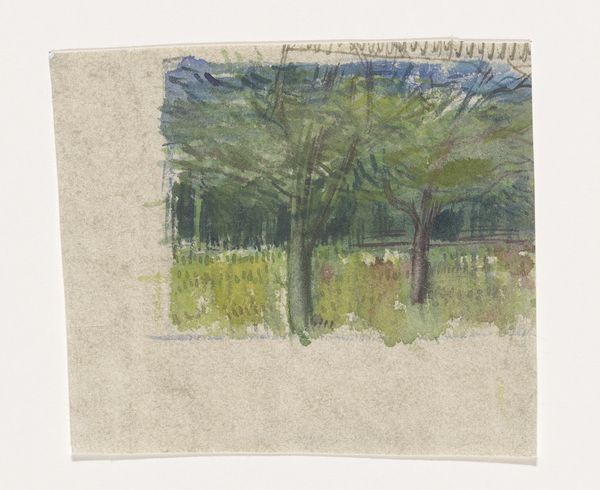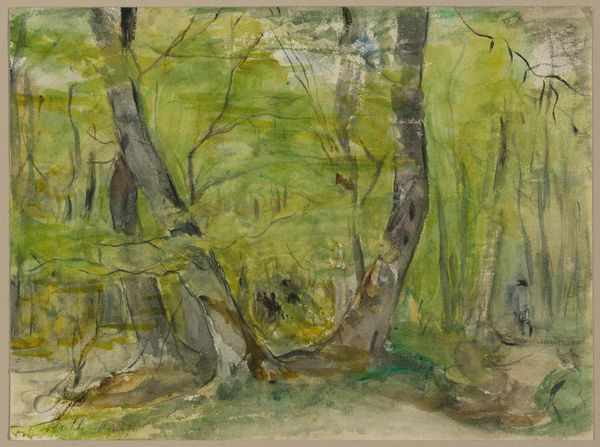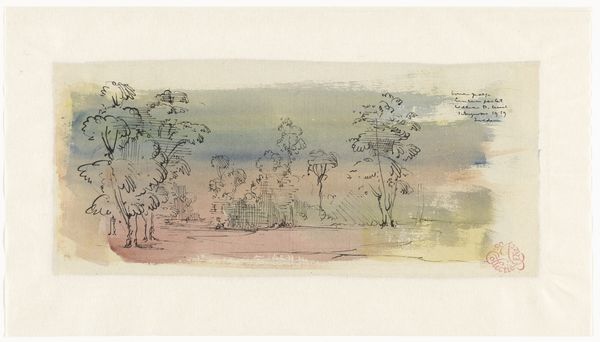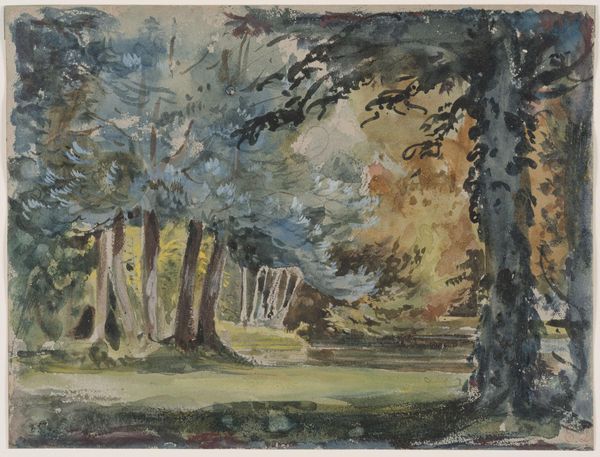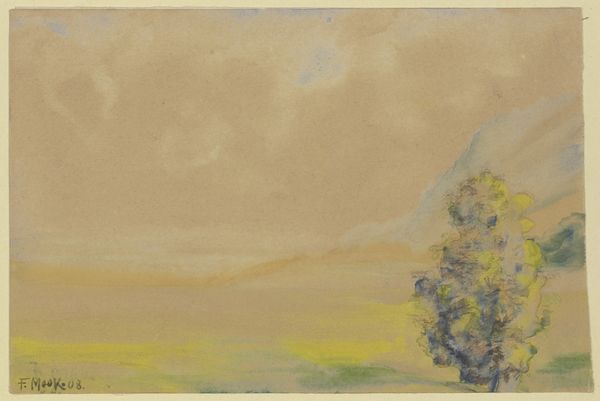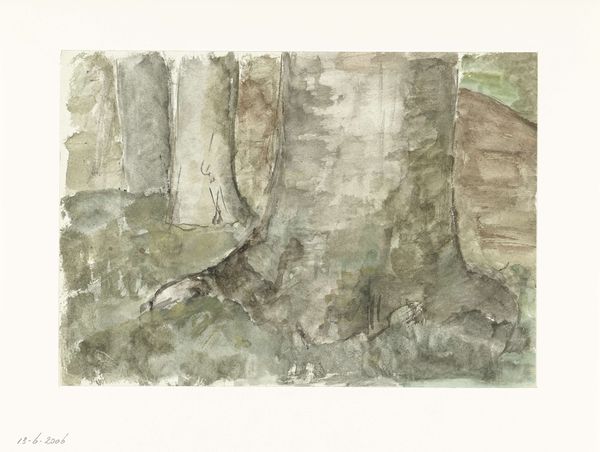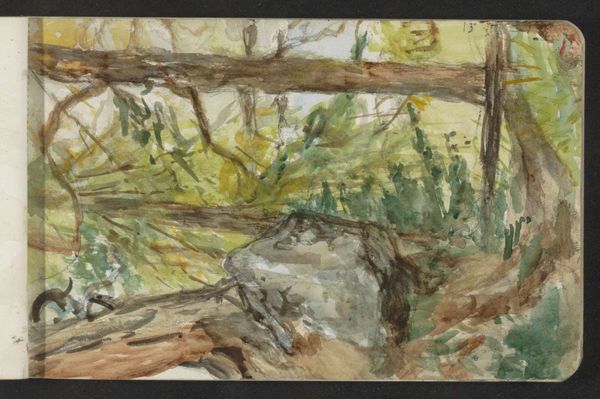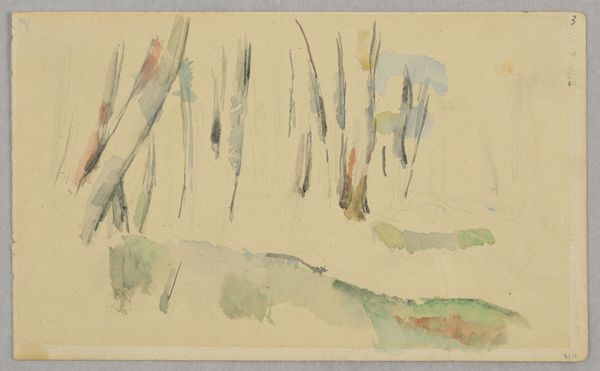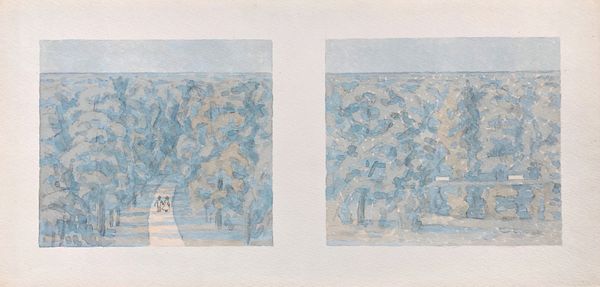
watercolor
#
water colours
#
landscape
#
watercolor
#
watercolor
#
realism
Dimensions: height mm, width mm
Copyright: Rijks Museum: Open Domain
Curator: This unassuming watercolor, "Bomen in blad," which translates to "Trees in Leaf," comes to us from the hand of Kees Stoop, though it’s been dated across a rather wide range of 1939 to 2009. What’s your first impression? Editor: It feels like a quiet observation, doesn't it? A brief moment captured, the layering of blues and greens, especially toward the upper reaches, hints at depth, yet the texture of the paper retains flatness. It has a wonderful immediacy. Curator: Indeed. And it's this quality that resonates, I think, when considering it within Stoop’s broader artistic practices—landscape, and his realist style of rendering. Remember, he was working in a world wrestling with identity during and after the war and later still after Apartheid—and yet, here, trees. A kind of steadfastness maybe? A symbol of place when perhaps the world around him seemed transient. Editor: Interesting. I tend to see the choice of watercolor itself as vital here. The transparency creates such a soft effect, almost as if the scene is viewed through a veil. You note this piece speaks to steadiness, but perhaps that reading discounts the potential transience captured via that watery texture and thin paper? Curator: That is a good question to raise. Looking at it more from that perspective, one can not but consider the relationship between this watercolor and its historical time. We know how art can at times be instrumentalized to evoke national feelings, of belonging and rootedness. I wonder how his contemporaries understood this art work as standing amidst this broader context? The Rijksmuseum, where it is housed now, can shed some further light on it. Editor: Yes, but for me it goes beyond pure symbolism or national meanings. Note that how the artist uses horizontal and vertical lines and their interrelation as building block is noteworthy in and on itself. There's also an appealing looseness in his application of washes, juxtaposed to the firmness of the trunks. Curator: I appreciate you bringing that visual tension to my attention, highlighting how surface technique engages beyond representation. It certainly compels one to reassess my own inclination toward broader sociological explanations of Stoop's creative project here. Editor: Indeed! Focusing on that interaction offers ways to move beyond a single interpretation of "Bomen in blad." A lovely way to pause before we head onward.
Comments
No comments
Be the first to comment and join the conversation on the ultimate creative platform.
